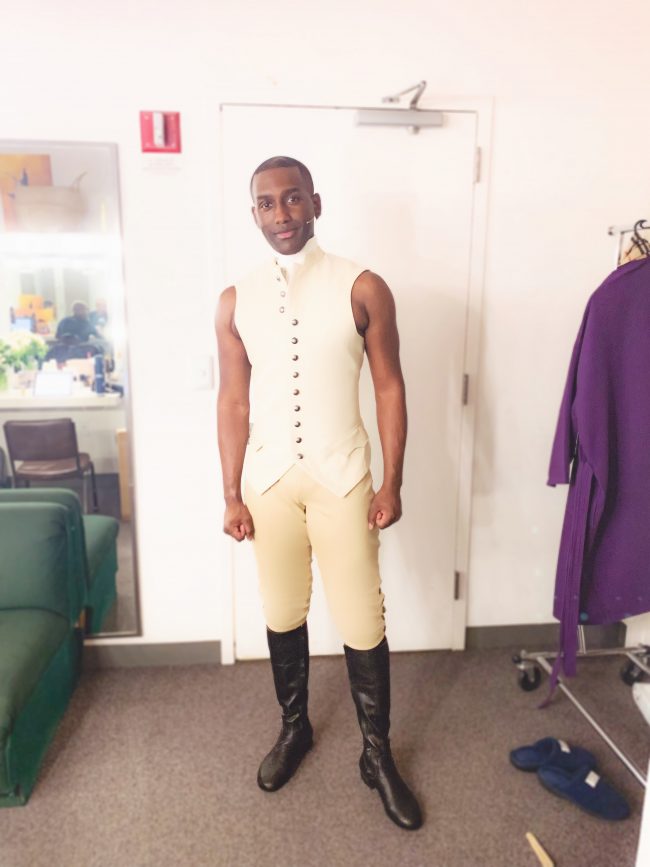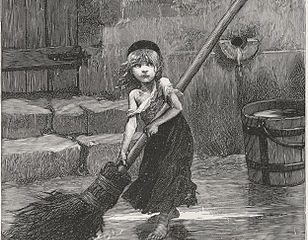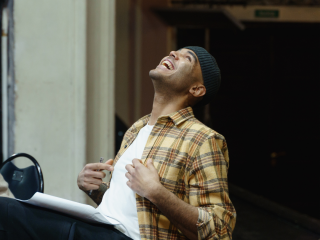So, we can all agree that we’re obsessed with Hamilton, right?
I mean, it’s clear with the number of performances that are happening all over the country, how insanely famous Lin-Manuel Miranda is, how every time I see a poster for Dear Evan Hansen I start singing “Dear Theodosia” …it’s a cultural phenomenon.
I feel very lucky to know a few people who are on tour with this amazing production, and I decided to get one of them to talk to me and all you readers out there about what it’s like to be in such a popular show. I immediately thought of my friend Christopher Henry Young (he/him/his), who is this month’s epic interviewee.

Photo by Mina Seville
Now, Christopher is multi-talented. He can sing, he can dance, he can choreograph (I happen to know he can cook), and he uses all these skills for his job. His first Broadway show was in A Bronx Tale and now Christopher is a swing in the sit-down production of Hamilton in San Francisco, which makes me jealous every day because San Francisco is my favorite place on earth, and Hamilton is one of my favorite shows.
Since so many people are curious about the show and are equally curious about what in the world a “swing” is, I thought it would be great to speak to Christopher about how he got involved with the show and have him tell us a little bit about what he does.

Photo by Marja Harmon
If you have ever wondered what the difference between an “understudy” and a “swing” is, if you love singing and dancing and want to know how to use both in your blossoming career, or if you’re about to go on tour and need some advice, read on.
Q: Tell us about yourself and what you do!
I’m Christopher Henry Young (He/Him/His). I was born in Baltimore, MD (age 0 – 13) and raised in York, PA (age 13-20). I now consider New York City home, but I am in the San Francisco sit-down production of Hamilton the Musical, which means that Hamilton is having an open-ended/long-term run in San Francisco. The show also has 2 national tours that travel the country, a Broadway production, and two sit-down productions in Chicago (recently closed) and here in San Francisco.
I am a Theater Artist. More specifically I am a stage actor/singer/dancer/choreographer and I recently tapped into coaching/instructing for the stage.
Q: When did you first know you wanted to become an artist, and how did it manifest in its earliest stages?
I knew at age 15 that I wanted to become an artist, which was only two years after finding theater. At that point, it manifested as a sort of compulsion or survival instinct. I say that because the theater was how my parents got me to positively express my emotions, open up again/find confidence in the midst of extreme culture shock, handle panic, and deal with a very difficult loss in my life.
When I wasn’t sure how to cope or move forward, I’d sing, or create a character that I needed to be to get through the moment! Basically, I lived the saying “fake it till you make it”, only I slowly learned I didn’t have to fake it!
Q: What was your first introduction to Hamilton?
I moved to New York City for the first time in July of 2015, just as Hamilton was beginning performances on Broadway. A guy I was seeing, who was not in the theater world, wanted to impress me with tickets to a preview performance of the show. I had no idea what Hamilton was at the time. The show broke my brain haha…I was in such shock and awe!
Q: What is a swing?
A swing is a performer who is responsible for covering multiple roles in the ensemble. Swings are usually offstage cast members who learn multiple roles (vocals, choreography, and any dialogue) and in the event that an onstage cast member is unable/unavailable to perform, a swing will perform the role.
Q: What is the difference between a “swing”, an “understudy”, and a “standby”?
The difference in the definition of a swing and an understudy will vary depending on who you ask or the show they’re specifying, but here’s my opinion:
- An “understudy” is an onstage actor that covers a principal role(s).
- A “swing” is usually an offstage actor that covers multiple roles in the ensemble.
- A “standby” is an offstage cover for a principal role(s).
Of course, there are exceptions to these definitions but largely those are the differences.
Q: What was the audition process like to become a swing?
It differs for each show, but for Hamilton it involved a lot of jumping back and forth between choreography, taking quick directorial adjustments, and singing different vocal parts.
They’d have me singing the baritone and tenor vocal lines back to back or singing some of the ensemble feature roles with full character one after another.
I’ve been a swing on quite a few shows in my career, so my resume sort of says that swinging is something I do!
Q: What is the hardest part of being a swing?
Woof…The demand and culture around swinging is one of the most challenging parts. Sure, learning multiple roles is tough, but having half the rehearsal time to learn roles and perform them well is not an easy task. From day 1 of rehearsal, you are learning your roles, but because the onstage actors take priority in learning, you may not get to do things in the actual space or with your fellow actors. The moment someone is out, however, it’s part of our job to go on stage regardless of how much “real” rehearsal we’ve had.
Finding out during the show that you have 3-7 minutes to get into costume and mic and get onstage is intense. Switching between two different roles from a matinee to an evening show is taxing. These moments are all part of the culture of being a swing. Always being prepared to perform any role is the job.
Q: What is your favorite part about being a swing?
My favorite part is getting to use and prove my range and ability! Shows constantly ask actors to be able to be and do more. And as creative teams build increasingly challenging, demanding, high quality roles, I need to be able to perform all of it.
I take a lot of pride in what my work says about me and how I use my work to express myself. That means I’m always working on or towards something. I’m always making adjustments and always on my toes. It leaves very little room to get bored onstage. Shows rarely become boring for me because it’s always different, and who I am to the show is the same but who I am IN the show (what role I play) differs from show to show.
Q: What is a “track” and what is your favorite track to perform?
A track is the onstage existence of the actor performing a role: Blocking, choreography, direction, etc. The “role” is the character we perform, the “track” is the staging for the actor.
The role of Man 2/Samuel Seabury is my favorite because it allows me to work on something I find very difficult: comedy. I’m rarely funny on purpose and I’ve always been told that though the circumstances may be humorous to the audience, they should be serious to the actor. To that end, performing Seabury challenges me to find the truth behind what can be seen as a humorous exchange between Hamilton and Seabury. And out of the other ensemble features, he’s the character who I differ from most and I like the opportunity.
Q: What are 5-10 things you wish you knew before you became a swing?
1. What the industry expects from a swing (a lot).
2. How to read music.
3. To have read the Actors Equity Association’s contracts as well as the production contract to understand what guidelines the show should populate under.
4. How to create a tracking sheet. (A track/tracking sheet is a notated version of the roles onstage existence. It keeps blocking, on and offstage traffic, entrances/exits, choreography, props/prop movements, costume change instructions, etc. in an outline that helps swings/understudies recall the intimate details of the roles they cover.)
5. How helpful/important it is to be self-sufficient in learning show materials.
Q: What are 5-10 things you wish you knew before going on tour?
1. To start building a routine for my life outside of the show/the theater/work. It helps keep life balanced.
2. How challenging adjusting to weather differences would be.
3. To submit for your vacation early!
4. To understand what you need to have a good quality of life independent of geographic location.
5. How weird it is to do a sit-down production outside of New York City. Audiences are different, people think of theater as a profession differently, and most cities don’t exist around the theater world like New York City does…in my opinion.
Q: What is one of the best pieces of advice you’ve received?
Do the work, trust the work, find joy in the work you’ve done, and take pride in the high quality of that work.
Q: Where can people find out more about you?
You can follow me on Instagram/Twitter @CyoungOnStage where I post a lot about my career and being a swing. Check out my website www.ChristopherHenryYoung.net where you can find my resume, bio, videos and such.














